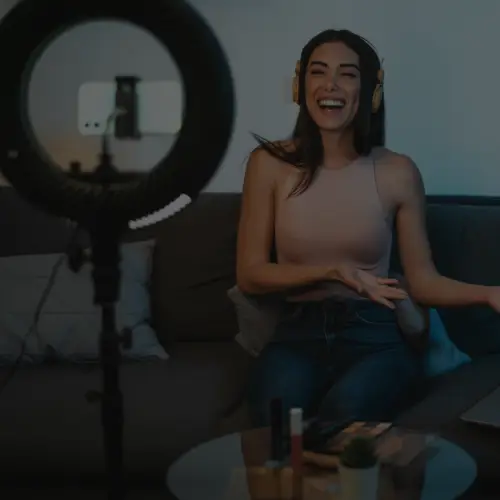23 Jun How To Market to Tweens: Virtual Worlds
Since early on in this millennium, tweens have been online in increasing numbers as Generation Y has grown up and Generation Z, the digital natives, have begun taking over.
Tweens are defined as being 9-12 year olds and they are, in essence, the “in-between” years between being a child and a teenager. They are projected to hit 23 million by 2020 according to the U.S. Census and they are a growing segment of the U.S. population with hands on mommy and daddy’s wallets that cannot be easily tapped online. Extensive COPPA laws keep the tweens off of the major social networking sites like Facebook and YouTube – the minimum age for an account on most sites is 13.
They’re difficult to talk to, that is, unless you talk with them through already existing safe channels online: child and tween friendly virtual worlds.
Tween virtual worlds?
Virtual worlds as a safe haven for tweens and children have been around since the late-90’s, most notably with the beginning of Neopets. A virtual pet website started in 1999, Neopets is a virtual world (Neopia) that allows the creation of virtual pets where they can be taken care of with virtual food, toys, clothes and other accessories by using Neopoints or Neocash. Neopets is also a thriving community where owners of Neopets can interact with each other through guilds, Neoboards, NeoMail and games. All throughout the site is self-promotion for Neopets as well as advergames, online marketing surveys, and other immersive ads. Viacom bought Neopets for $160 million.
Thus began the trend of capitalizing on virtual worlds for children.
From online to offline
After the success of Beanie Babies, another company realized that there was more to that trend than people originally picked up on. In 2005, Webkinz released stuffed animals similar to plenty of other stuffed animals except for the fact that every Webkinz toy was sold with a “Secret Code” allowing access to the “Webkinz World.” Similar to Neopets, Webkinz allows the user to have a virtual version of their pet.
Talk about brilliant.
I grew up with Neopets, personally. I’m 22 and was an early adopter for Neopets at the ripe old age of 10. This was alongside my time of going crazy for Beanie Babies. And Pokemon. Tapping into that “gotta catch ‘em all” desire in tweens is genius and you can see it all over the place. Neopets offers collectible items series. A majority of Webkinz tasks involve collecting items. Beanie Babies, at its roots, was a fad involving collectibles.
Once I hit my teen years, I grew out of the site. But I distinctly remember being 18 years old and watching a friend’s child on the Webkinz site. You know that profound jealousy when someone else has a brilliant idea that seems so obvious, you know you should’ve thought of it first? After all of my years with Beanie Babies and Neopets, I felt that jealousy and awe. My kudos to Webkinz.
As of 2008, Webkinz and other children-friendly virtual world sites dominated:
Yet Webkinz has been slowing down. This year, Ganz announced that accounts would no longer expire, meaning users would not have to buy a new pet every year. This is a sign that users have been leaving due to the semi-subscription based nature of the Webkinz virtual world. Webkinz stuffed animals themselves have been on sale in various places and it seems that this world in particular is on the decline.
Yet part of that decline may be from Disney’s naturally fitting entrance in the field.
Club Penguin
Blending the games industry, virtual worlds, and once again – that desire to collect things and be a part of a safe community, Disney has done a fantastic job with their acquisition and additions to Club Penguin.
Technically an MMORPG (massively multiplayer online role-playing game) due to the nature of having a penguin avatar, Club Penguin has been available since 2005 and capitalizing on the trend of virtual worlds with games ever since. Designed for 6-14 year olds, the game emphasizes child safety with filters, moderators and more safety measures.
Club Penguin was originally developed by Club Penguin Entertainment (New Horizon Interactive) but The Walt Disney Company bought it in 2007 for $350 million with an additional $350 million in bonuses for 2009 targets.
While Webkinz may be on the decline, Club Penguin is still going strong. With the support of Disney ever since 2007, it makes sense. Disney has been expanding more and more into the video game industry so Club Penguin, a beautiful blend of a virtual world and an MMORPG, makes perfect sense.
Virtual worlds for teens
Not only Tweens have been targeted but Teens as well by the virtual world efforts. Two notable worlds in the teen segment already are Habbo and IMVU. Habbo has been around since 2000 and has 11 online communities in over a whopping 150 countries. Habbo specifically targets teens (13-18 year olds). IMVU, on the other hand, has been around since 2004 and is not so teen-concentrated but still youthful in nature.
In our recent social media infographic, we featured information on Habbo and IMVU:
What this means for marketing to tweens
What does this mean for marketers? When you need to talk with tweens, you need to talk through the safe communities already in existence for them. If you’re going to make your own safe virtual world for children, be prepared to do a lot of work. Making your own community is difficult, time-wise and legal-wise. If you’re going to do it, make sure you have researched the field. As for social media? Trying to reach out through Facebook or Twitter directly to 9-12 year-olds not only won’t work – it’s illegal. A few tips:
- Always be mindful of COPPA laws.
- Remember the ethical issues of marketing to children: what if these were your kids you were trying to talk to? Err on the side of caution with any marketing messages.
- Do your research on the virtual worlds and the children that are playing in them. Maybe Stardoll (a browser game based around the paper doll concept) isn’t the best place to get the message out about a new Nerf gun. Maybe Club Penguin is the absolutely perfect spot to talk with 10-year-old girls about new accessories for Croc shoes. Just make sure you do your research and think things through.
- When in doubt, try it out. If possible, get in the virtual world and see what the children there are interested in. If you have children, watch how they interact with the worlds. Sometimes this is easier said than done but it can be the best way to plan a safe, ethical marketing message for tweens in virtual worlds.
It will be very interesting to see how things develop in this field once these tweens grow up, having already grown up with avatars and virtual worlds. Marketers will definitely need to keep this in mind for future campaigns. What are your thoughts on tween virtual worlds?








